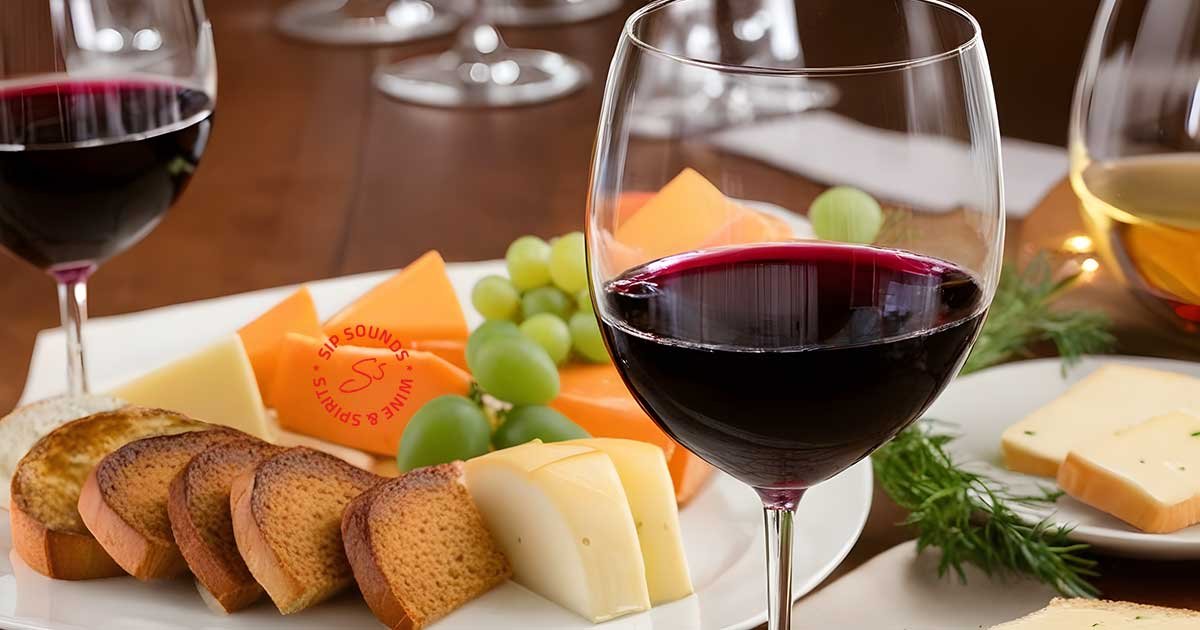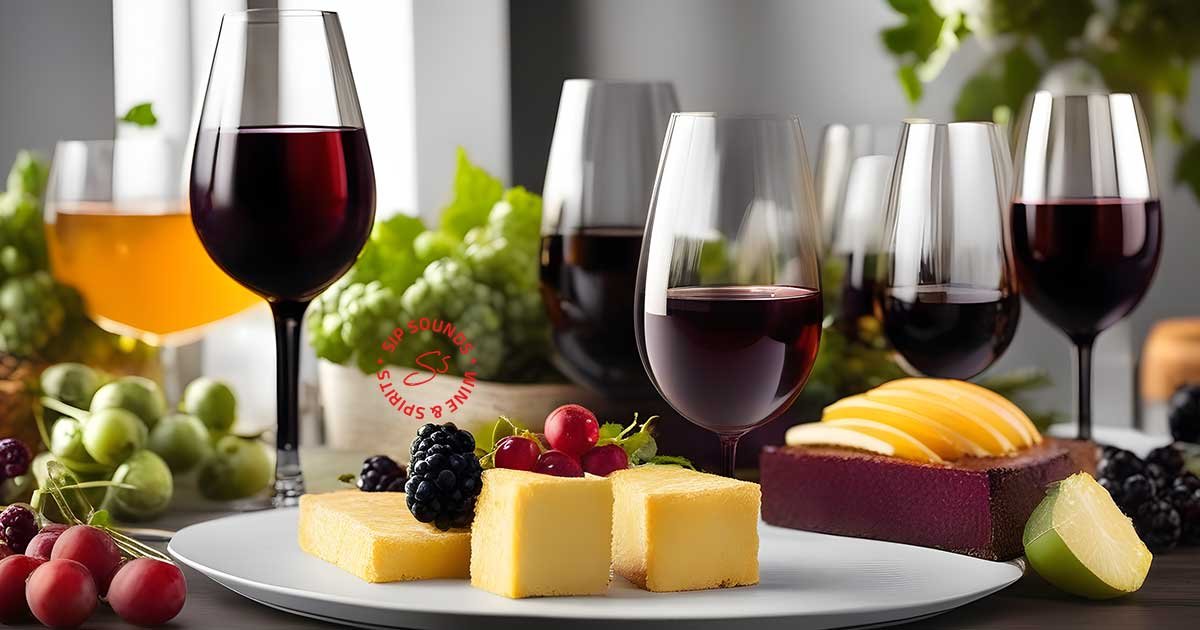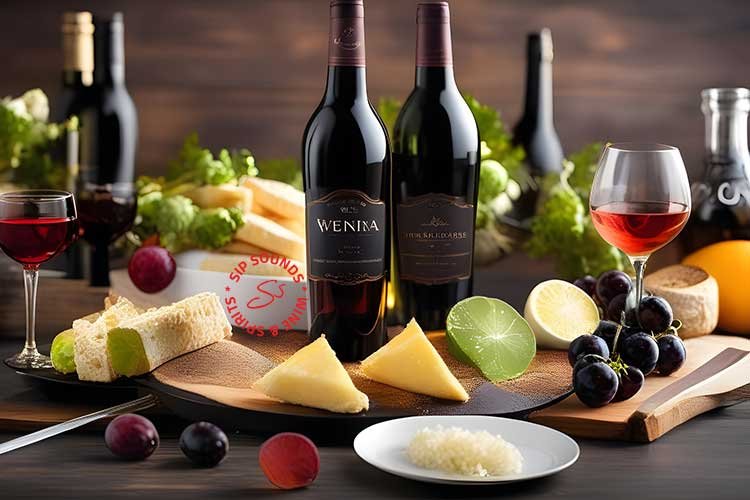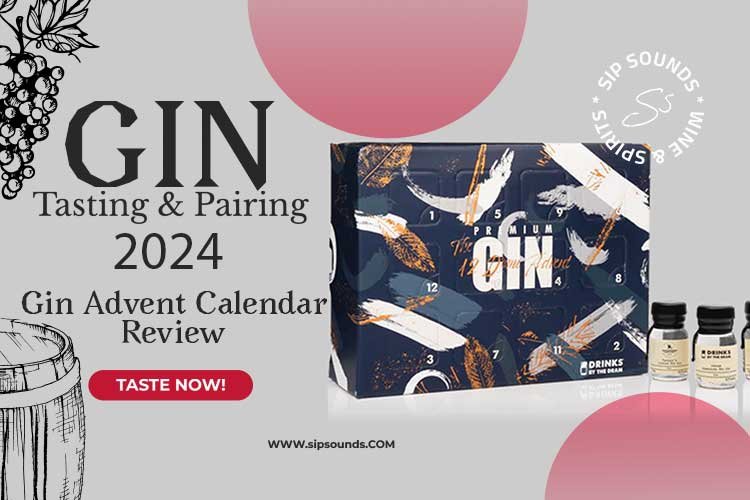In this article, we’ll delve into the art of creating perfect pairings between wine and food. Starting with an introduction to the significance of wine and food pairings, we’ll explore key characteristics and principles of successful pairings for both white and red wines. Additionally, we’ll step beyond the traditional boundaries to uncover unconventional pairings that excite the adventurous palate. Lastly, we’ll summarize the main takeaways and address frequently asked questions, empowering readers to enjoy the delightful harmony of wine and food.
Table of Contents
Understanding Wine Characteristics
Before we dive into the world of wine and food pairings, it’s essential to understand the characteristics of wine that play a crucial role in creating harmonious combinations. Three primary characteristics to focus on are acidity, tannins, sweetness, and body.
The Crucial Role of Acidity in Pairing
Acidity is a fundamental element in both wine and food that can significantly impact pairing success. Wines with higher acidity tend to pair well with dishes that have higher acidity levels, such as citrus-based seafood dishes or vinaigrette-dressed salads. The acidity in wine can cut through the richness of certain foods, refreshing the palate and enhancing the overall dining experience.
Exploring the Influence of Tannins on Food Compatibility
Tannins, commonly found in red wines, contribute to their structure, texture, and astringency. When pairing red wines with food, it’s crucial to consider the tannin level and its interaction with different flavors. Foods with strong flavors, like grilled meats or aged cheeses, can handle wines with higher tannin levels, while lighter dishes may be overwhelmed by the astringency. Finding the right balance between tannins and food flavors is key to a successful pairing.
Unveiling the Impact of Sweetness and Body on Pairing Success
The sweetness level and body of a wine can greatly influence pairing choices. Sweeter wines, like Rieslings or dessert wines, can complement dishes with a touch of sweetness, such as fruity desserts or spicy Asian cuisine. On the other hand, full-bodied wines, like oaked Chardonnays or bold Cabernet Sauvignons, pair well with hearty dishes that can handle their rich flavors.
Pairing Principles for White Wines
White wines come in a variety of styles, each with its own distinct characteristics. Understanding these characteristics can guide us in creating perfect pairings.
Light and Crisp: Ideal Pairing Options
Light and crisp white wines, such as Sauvignon Blanc or Pinot Grigio, are known for their refreshing acidity. They pair exceptionally well with seafood dishes that have citrusy flavors, like ceviche or grilled shrimp with lemon zest. The acidity in the wine cuts through the richness of the seafood, creating a harmonious balance on the palate.

Aromatic whites, like Gewürztraminer or Viognier, offer a delightful combination of floral and fruity notes. They can enhance delicate dishes like poached white fish or chicken with light cream sauces. The aromatic profile of these wines adds an extra layer of complexity to the pairing, elevating the overall dining experience.
Mineral-driven whites, such as Chablis or Albariño, showcase a distinct minerality that beautifully complements fresh salads and vegetables. The crispness and subtle salinity of these wines enhance the natural flavors of the greens, creating a vibrant and refreshing pairing.
Rich and Full-bodied: Perfect Partners on the Plate
For creamy dishes like lobster bisque or pasta with Alfredo sauce, oaked Chardonnays are the ideal pairing choice. The richness and buttery notes of the wine complement the velvety textures and flavors of the dishes, creating a luxurious dining experience.
Textured white varietals like Roussanne or Marsanne can elevate poultry dishes, such as roasted chicken or turkey. These wines offer a fuller body and a hint of spice, harmonizing with the savory flavors of the meat.
Aromatic and complex whites, such as Viognier or white Rhône blends, have enough depth to complement bold flavors. Pairing them with dishes like Indian curry or Moroccan tagine brings out the intricate spiciness in both the food and the wine, creating a truly memorable fusion of flavors.
Sweet and Dessert Whites: Indulgent Harmony
Sweet whites, like late-harvest Rieslings or Sauternes, offer a delectable pairing opportunity with salty and tangy cheeses. The natural sweetness of the wine beautifully contrasts the savory notes of the cheeses, creating a harmonious balance on the palate.
When it comes to rich desserts, aromatic and acidic sweet wines, such as Moscato d’Asti or Tokaji, can be the perfect companions. The acidity in these wines cuts through the sweetness of dishes like crème brûlée or fruit tarts, preventing the palate from feeling overwhelmed and enhancing the overall enjoyment.
Exploring the world of fortified dessert wines, like Port or Madeira, can open up a whole new level of indulgence. These wines pair exceptionally well with rich chocolate desserts or strong, aged cheeses, adding depth and complexity to the overall sensory experience.
Pairing Principles for Red Wines
Red wines, known for their bold flavors and varied characteristics, offer exciting pairing opportunities that can elevate any dining experience.
Light and Fruity: Delicate Dance on the Palate
Lighter red varietals, such as Pinot Noir or Gamay, often exhibit red fruit flavors and a lighter body. They pair harmoniously with savory dishes like roasted duck or grilled salmon. The fruity notes in the wine enhance the natural flavors of these dishes, creating a delicate dance on the palate.

Grilled vegetables, like bell peppers or eggplant, can find their perfect match in lighter red wines. The earthy undertones and subtle tannins of these wines complement the smoky flavors of the grilled vegetables, creating a delightful combination.
Low-tannin reds, such as Beaujolais or Dolcetto, can enhance the spicy elements in cuisines like Mexican or Thai. The absence of strong tannins allows the spicy flavors to shine through without overwhelming the palate, resulting in a balanced and enjoyable pairing.
Bold and Robust: A Match Made in Gastronomic Heaven
When it comes to red meat, powerful tannic reds like Cabernet Sauvignon or Syrah take center stage. These wines have the structure and depth to stand up to the richness and intensity of dishes like a perfectly cooked steak or braised lamb. The tannins in the wine help cut through the fattiness of the meat, balancing the flavors and adding complexity to the pairing.
Rich stews and braised dishes, such as beef bourguignon or coq au vin, benefit greatly from full-bodied red wines. Wines like Malbec or Zinfandel match the robust flavors of these dishes, adding layers of complexity and enhancing the overall dining experience.
Flavorful cheeses like aged Gouda or blue cheese find their match in firm and aged red varietals. The combination of the cheese’s bold flavors and the wine’s tannins creates a symphony of tastes, leaving a memorable impression on the palate.
Earthy and Complex: Unlocking Hidden Depths
Certain red wines, known for their earthy and complex characteristics, can take food pairings to a whole new level.
Mushrooms and truffles, with their unique umami flavors, find an ideal pairing partner in earthy red wines like Nebbiolo or Pinotage. The earthiness in both the wine and the ingredients harmoniously complement each other, resulting in a truly extraordinary flavor experience.
Roasted game and hearty dishes, such as venison or braised beef cheeks, can be elevated with aged red wines. Wines like Barolo or Bordeaux blends offer the depth and structure needed to stand up to the rich flavors of these dishes, creating a match made in gastronomic heaven.
When it comes to aged cheeses like Parmigiano-Reggiano or Gruyère, complex and structured red varietals like Cabernet Franc or Sangiovese offer the perfect balance. The complexity of the wines matches the aged flavors of the cheeses, creating a sophisticated and indulgent pairing.
Exploring Unconventional Pairings
While traditional pairings offer a tried-and-true approach, exploring unconventional pairings can lead to exciting taste experiences.
Beyond Traditional Boundaries: Adventurous Taste Experiences
Pairing sushi with sparkling wines may seem unexpected, but the delightful union of effervescence and umami flavors can create a unique and memorable dining experience. Whether it’s a dry Champagne or a vibrant Prosecco, the bubbles refresh the palate and complement the delicate flavors of the sushi.
Pushing boundaries further, pairing rosé with spicier cuisines offers a delightful contrast of flavors. The fruity and refreshing qualities of rosé wines counterbalance the heat and spice, creating a harmonious balance on the palate. From Thai curry to Mexican street tacos, don’t be afraid to experiment with this unconventional pairing.
Innovative creations like fusion foods open up a whole new world of wine and food pairings. Whether it’s sushi burritos paired with a crisp Sauvignon Blanc or kimchi quesadillas paired with a bold Syrah, these unexpected combinations can surprise and delight the taste buds, creating a truly unforgettable dining experience.
Unlocking Regional Gems: Pairing Regional Specialties with Local Wines
Embracing regional specialties and pairing them with local wines can bring forth a unique and authentic dining experience.
In Italy, where pasta varieties abound, matching each pasta dish with a regional Italian wine can truly elevate the meal. From spicy arrabbiata paired with a bold Nero d’Avola to delicate seafood linguine paired with a crisp Vermentino, exploring the diverse pasta-wine combinations is a culinary adventure in itself.
French culinary delights are known for their elegance and sophistication. Experiencing the magic of Bordeaux and Burgundy by pairing them with iconic French dishes like coq au vin or beef Bourguignon can transport you to the heart of wine country. The complex flavors of these wines intertwine seamlessly with the richness and depth of the dishes, creating a gastronomic journey like no other.
Spanish tapas and wines offer a vibrant and lively pairing experience. From briny olives paired with a crisp Albariño to spicy chorizo paired with a robust Rioja, exploring the dynamic flavors of Spain through their traditional small plates and wines is an adventure for the senses.
Elevating Everyday Meals: Simple Pleasure, Exceptional Pairing
Pairing wine with everyday meals doesn’t have to be complicated. It’s about finding the right match to enhance the flavors of your favorite dishes.
Matching comfort foods like mac and cheese or roast chicken with accessible and affordable wines like a smooth Merlot or a refreshing Chardonnay can take these classic dishes to new heights. The familiarity of the meal combined with the carefully chosen wine adds a touch of sophistication and elevates the overall dining experience.
For casual meals like burgers or pizza, opting for versatile and approachable varietals like Cabernet Sauvignon or Sangiovese can provide the perfect balance of flavors. These wines complement the savory elements of the dishes, creating a harmonious pairing that satisfies the palate.
Adding a touch of sophistication to home-cooked classics, like spaghetti Bolognese or roasted pork tenderloin, can be as simple as selecting a wine that enhances the flavors without overpowering them. A medium-bodied red like Merlot or a silky-textured white like Chardonnay can accentuate the richness and complexity of these dishes, elevating them from ordinary to extraordinary.
Summary and FAQs
In summary, the art of creating perfect pairings between wine and food involves understanding the characteristics of wine, considering the acidity, tannins, sweetness, and body. With this knowledge, we can explore pairing principles for both white and red wines, from light and crisp options to rich and full-bodied choices. Venturing beyond conventional boundaries allows us to discover exceptional pairings, from unexpected matches like sushi and sparkling wine to regional gems like Italian pasta and local wines. And finally, we should feel encouraged to experiment and embrace personal preferences in order to find the perfect wine and food harmonies that bring us joy.
Recap of the Key Principles for Successful Wine and Food Pairings:
- Consider the acidity, tannins, sweetness, and body of the wine.
- Look for harmony and balance between the flavors of the wine and the food.
- Experiment with unconventional pairings for unique taste experiences.
- Embrace regional specialties and pair them with local wines.
- Remember that wine and food pairing is an art that can be personalized to individual preferences.
Answers to Common Questions: Addressing Myths and Misconceptions
Q: Should I always pair white wines with white meat and red wines with red meat?
A: While white meats like poultry and fish typically pair well with white wines, and red meats generally pair well with red wines, it’s not a strict rule. The key is to find a balance of flavors and consider the characteristics of both the wine and the food. Experimentation is encouraged to find surprising and delightful pairings.
Q: Can I pair sweet wines with savory dishes?
A: Absolutely! Sweet wines can provide an excellent contrast to savory dishes, creating a harmonious balance on the palate. For example, pairing a sweet Riesling with spicy Asian cuisine can create a delightful combination of flavors. Don’t be afraid to explore the possibilities and discover your own favorite pairings.
Q: Is it necessary to pair regional specialties with local wines?
A: While it’s not necessary, pairing regional specialties with local wines can elevate the dining experience by providing an authentic taste of the region. It allows you to discover the synergies between local dishes and wines, showcasing the unique culinary traditions of a specific area.












Having read this article, I found it to be of great value to me. Thanks for sharing it. The article on sipsounds is interesting, and I recommend it to everyone